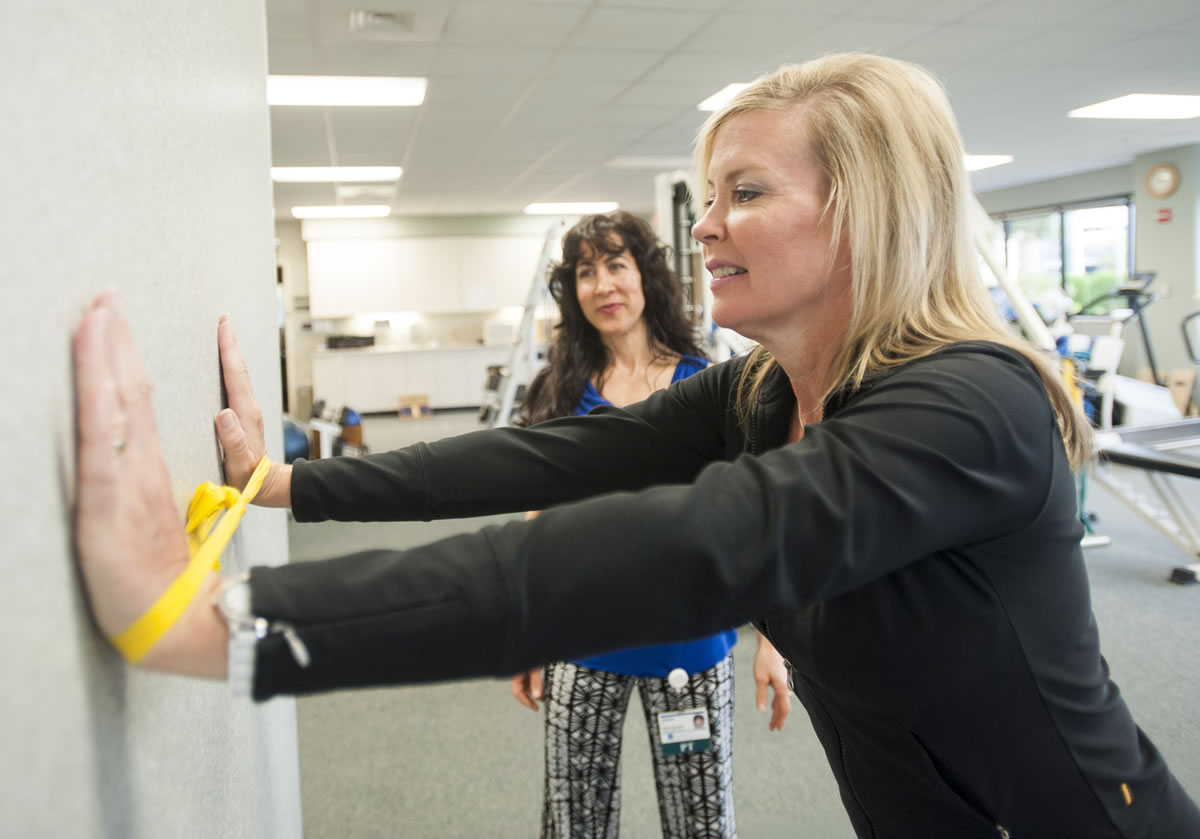Stevette Camp’s world was turned upside down when she was diagnosed with breast cancer last April.
The Vancouver woman, now 42, was preparing for her son’s upcoming wedding when she learned the tender bump she felt on the side of her breast was cancer.
Camp opted for a double mastectomy, and after the surgery, Camp’s providers urged her to go to physical therapy — a suggestion she resisted.
“I pushed back my first appointment because it didn’t make sense to me,” Camp said. “How do you make someone go to physical therapy after they just took my breasts?”
Several years earlier, Camp had an unpleasant experience in physical therapy, which made her nervous and skeptical of trying it again. She feared the “No pain, no gain” motto she had come to associate with physical therapy.
About two weeks after surgery, though, Camp’s right arm began swelling and became painful. Camp’s oncologist told her she had lymphedema — the result of surgeons removing a chain of 15 lymph nodes in her arm.
Camp purchased a compression sleeve and finally found relief, but the new diagnosis made her reconsider physical therapy.
Nearly two months after her mastectomy, Camp had her first appointment with Joyce Masters, a physical therapist who specializes in orthopedic, oncologic and pelvic floor rehabilitation at PeaceHealth Southwest Medical Center.
Masters has been a physical therapist for more than 25 years. In 2008, she became a certified lymphedema specialist.
“I’ve come to know the needs of breast cancer patients really well,” she said.
At Camp’s first visit, Masters explained what lymphedema was — and how the lymphatic system works. She stressed the importance of wearing the compression sleeve and demonstrated stretches and how Camp can perform a gentle massage on her arm.
Camp noticed immediate improvement.
“It’s day-and-night difference,” Camp said. “Had I not learned what I learned from her, I think I would be suffering on a daily basis.”
“This is managing it so well, I feel like I have my life back,” she added.
Restoring motion
Much of Masters’ time with breast cancer patients is spent providing restorative care.
Women who undergo mastectomies — either with or without reconstruction — run the risk of losing shoulder function and experiencing pain. That’s solely because they stop using their shoulder, Masters said. If the pectoral muscles are tight or sore, a woman may treat her arm like a broken wing and not move it or raise it, she said.
“A lot of women don’t regain their range of motion and strength,” Masters said.
Not long after her double mastectomy, Susan Pagel of Battle Ground began having difficulty moving her left arm — the side where lymph nodes were removed.
“That side in particular, the mobility was incredibly restricted,” Pagel said. “I knew if I didn’t get some sort of intervention, I wouldn’t be able to correct this on my own.”
Pagel’s pectoral muscle was tightening as it was healing. As a result, Pagel’s shoulders were rounding, allowing her body to curl around her wounded chest.
Masters showed Pagel, 53, how to safely stretch her pectoral muscles in order to regain her range of motion and taught her techniques to use at home.
Preventing problems
Masters typically sees patients for the first time about seven to 10 days after surgery. She likes to catch people before the drains are removed to educate them about how they can safely be active and prevent surgery-related problems.
“We can prevent the negative affects of the cancer treatment from happening a lot of times,” Masters said.
Much of Masters’ time is spent educating her patients about the importance of exercise and how they should exercise. She also explains why it’s important that they not take on too much too soon.
“Women are still the doers of the family,” Masters said. “They’ll push themselves to get back on track as fast as possible.”
“It gets them into trouble,” she said.
Aside from education, Masters does manual therapy — massaging the surgery area to reduce swelling and manipulate scar tissue — and therapeutic exercise, such as teaching patients stretches to increase mobility and strengthen muscles.
Masters encourages all breast cancer patients to see a physical therapist at least once or twice so they can get set on the right course for recovery. After that, patients can take their recovery into their own hands, she said.
“I could not imagine not having physical therapy after mastectomy,” Pagel said. “I cannot imagine what that world would look like. It would be painful, and I wouldn’t look good.”




